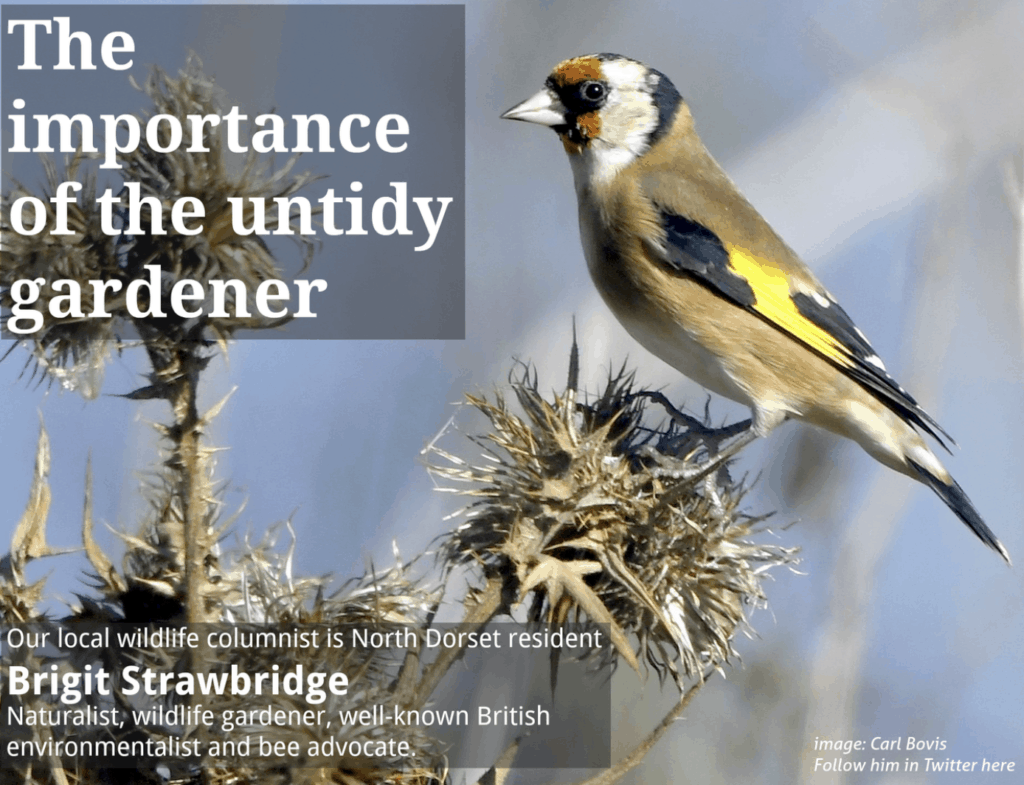A ‘charm’ of goldfinches has just landed on the lavender bush at the bottom of our garden. I can count eleven in all; two more than yesterday, and five more than the day before. Word must be getting around…
Our lavender finished flowering months ago, as did many of the other flowering plants in our garden, but though these plants are no longer producing nectar and pollen for insect visitors, this does not diminish their value to other garden wildlife. On the contrary, by resisting the temptation to cut back and ‘tidy up’ at this time of year, we gardeners and allotment holders are providing a life-line for all manner of wild creatures as they prepare to face the challenging winter months ahead. As well as the goldfinches (and other birds) who feast on their nutritious seeds, dead standing plants provide much needed shelter and protection for numerous invertebrates, including many who nest or hibernate over winter inside their hollow stems. To top if off, seed heads are stunning, diverse, and even more beautiful in shape and form, in some cases, than the plants were whilst in bloom.

Equally important for wildlife, if not more so, are fallen leaves. In fact it is impossible to overstate the value of ‘leaf litter’ which, as well as providing a rich layer of humus for the soil, is ‘home’ to spiders, worms, beetles, globular spring tails (new to me and adorably cute!) and many more mini-beasts besides. And of course these invertebrates provide an invaluable protein-rich source of food for birds, amphibians, and small mammals.
So, on behalf of all the invertebrates, birds, small mammals, amphibians and other wild creatures who helped make ‘lockdown’ more bearable for you earlier this year, please… try to resist the temptation to strip your borders bare, and leave at least some of the leaves in your garden for wildlife. If you do need your lawn to be free of leaves, then consider gathering them up whole and, where space allows, create a leaf pile habitat. If you are short on space, place them around shrubs, ornamental trees and perennials, so they can break down naturally whilst still providing a resource for your wild visitors.
by Brigit Strawbridge
http://beestrawbridge.blogspot.com
Twitter: @B_Strawbridge


